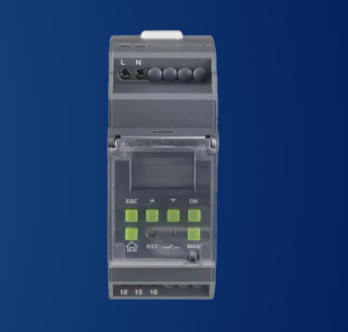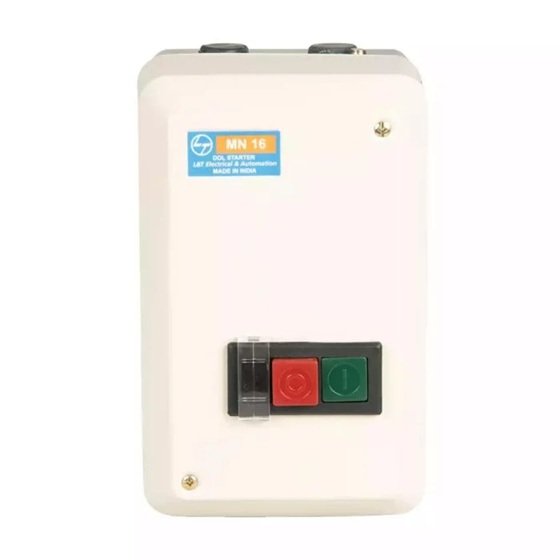In the world of modern electrical systems, safety and control are paramount. Whether in residential buildings, commercial complexes, or industrial environments, reliable protection mechanisms are essential to prevent hazards like short circuits, overloads, and electrical fires. One of the most significant components in ensuring this safety is the MCCB isolator.
Understanding the role and functionality of MCCB isolators, alongside pole isolators, helps facility managers, electricians, and engineers design systems that are not only efficient but also exceptionally secure. This guide delves into what an MCCB isolator is, how it functions, how it compares with a pole isolator, and why both are essential in electrical safety infrastructure.

What Is an MCCB Isolator?
An MCCB isolator (Moulded Case Circuit Breaker Isolator) is a device that combines the features of an MCCB and an isolator, offering both circuit protection and the ability to safely disconnect electrical circuits. It is designed to interrupt current flow under fault conditions, such as overload or short circuit, while also allowing manual disconnection for maintenance and inspection.
The key difference between a traditional MCCB and an MCCB isolator is that the isolator function guarantees complete disconnection, ensuring no leakage or residual current is present during servicing. This feature is particularly important in environments where personnel safety is a priority and maintenance is frequent.
How Does an MCCB Isolator Work?
The MCCB isolator operates by detecting abnormal electrical conditions such as:
Overcurrent (when load current exceeds rated value)
Short circuit (a sudden and dangerous increase in current flow)
Once detected, the isolator trips, breaking the circuit and protecting downstream devices. Simultaneously, the isolator function ensures that when the MCCB is in the OFF position, the circuit is completely disconnected, with visible contact separation in some models.
This dual functionality makes MCCB isolators ideal for:
Industrial motor control centers
Commercial electrical distribution panels
Backup generator systems
High-power HVAC setups
Introduction to Pole Isolators
Alongside MCCB isolators, the pole isolator is another essential component in electrical isolation. A 2 pole isolator refers to an isolator switch that breaks the connection on one or more poles (lines) of an electrical circuit. The term “pole” indicates the number of circuits being interrupted.
The types of pole isolators include:
Single Pole Isolator – disconnects only the live wire; commonly used in residential circuits.
Double Pole Isolator – disconnects both live and neutral; used for higher safety.
Three Pole Isolator – used in three-phase circuits, disconnects all three live wires.
Four Pole Isolator – disconnects all three phases and the neutral line.
Each type serves different safety and load requirements, and the correct choice depends on system configuration and voltage level.
The Key Differences Between MCCB Isolator and Pole Isolator
While both devices are crucial to electrical safety, their applications and features differ:
1. Functionality
An MCCB isolator provides circuit protection with automatic tripping features.
A pole isolator is primarily a manual disconnect device, used to isolate equipment from the main supply during service.
2. Application
MCCB isolators are suited for both protection and isolation in higher current systems.
Pole isolators are used where disconnection is needed, without overcurrent protection features.
3. Protection
The MCCB isolator includes integrated protection features.
A pole isolator does not protect against overload or short circuit, but ensures safe maintenance by disconnecting the supply.
Together, these devices form a layered protection system—the MCCB isolator provides automatic protection, and the pole isolator ensures safe and complete manual disconnection.
Why MCCB Isolators Are Critical for Electrical Safety
Electrical safety is a non-negotiable element of any installation. The MCCB isolator contributes significantly to this in the following ways:
Prevents Fire Hazards
By automatically cutting off power during overcurrent or fault conditions, it minimizes the risk of insulation breakdown and electrical fires.
Safe Maintenance
During inspection or repair work, the isolator ensures complete de-energization, protecting technicians from electrical shocks.
Reliable Load Protection
Sensitive equipment such as industrial motors or commercial HVAC units benefits from the precise and rapid protection MCCB isolators offer.
Versatility
MCCB isolators can be used in a variety of load settings, from small commercial panels to large industrial power systems.
Importance of Pole Isolators in System Design
While MCCB isolators handle automatic fault protection and load disconnection, pole isolators are equally important for their manual isolation capability.
For instance, in a three-phase motor circuit, a three-pole isolator allows for complete disconnection of all phases, ensuring the motor or control panel is safe to access. In a residential inverter system, a double pole isolator is used to disconnect both input and output, ensuring no backfeed occurs during maintenance.
Pole isolators are especially useful in:
Solar power systems
Generator switching
Industrial machinery control
Power distribution panels
They add an extra layer of manual control, giving operators the flexibility to safely isolate circuits when needed.

Installation and Maintenance Best Practices
When installing either an MCCB isolator or a pole isolator, certain best practices should be followed to ensure optimal performance and safety:
Correct Sizing: Ensure the device matches the current and voltage rating of the circuit.
Secure Mounting: Use appropriate enclosures or switchboards to mount the devices securely.
Clear Labeling: Mark each isolator and MCCB clearly to indicate its function and the circuit it controls.
Periodic Testing: Conduct regular tests to check trip functionality (for MCCBs) and physical contact condition (for isolators).
Proper installation and routine maintenance extend the lifespan of the device and enhance safety compliance.
The Future of Circuit Protection and Isolation
As electrical systems become more complex and power demands rise, the need for intelligent and efficient protective devices grows. Modern MCCB isolators now feature digital trip units, remote monitoring capabilities, and smart diagnostic tools.
Similarly, pole isolators are being integrated into modular switchgear systems, offering space-saving and more accessible solutions for energy management. Both these devices are set to remain fundamental to every power distribution design, from smart homes to industrial plants.
Conclusion
Understanding the functions and applications of MCCB isolators and pole isolators is essential for building safe and reliable electrical systems. While MCCB isolators provide automatic protection and isolation, pole isolators offer manual, visual disconnection—both playing complementary roles in maintaining electrical safety.
For professionals seeking trusted electrical components, Lauritz Knudsen Electrical and Automation offers a robust range of MCCB isolators, pole isolators, and complete panel solutions designed to meet global safety standards and performance expectations. With a commitment to quality and innovation, Lauritz Knudsen remains a reliable partner in powering safe electrical environments.


